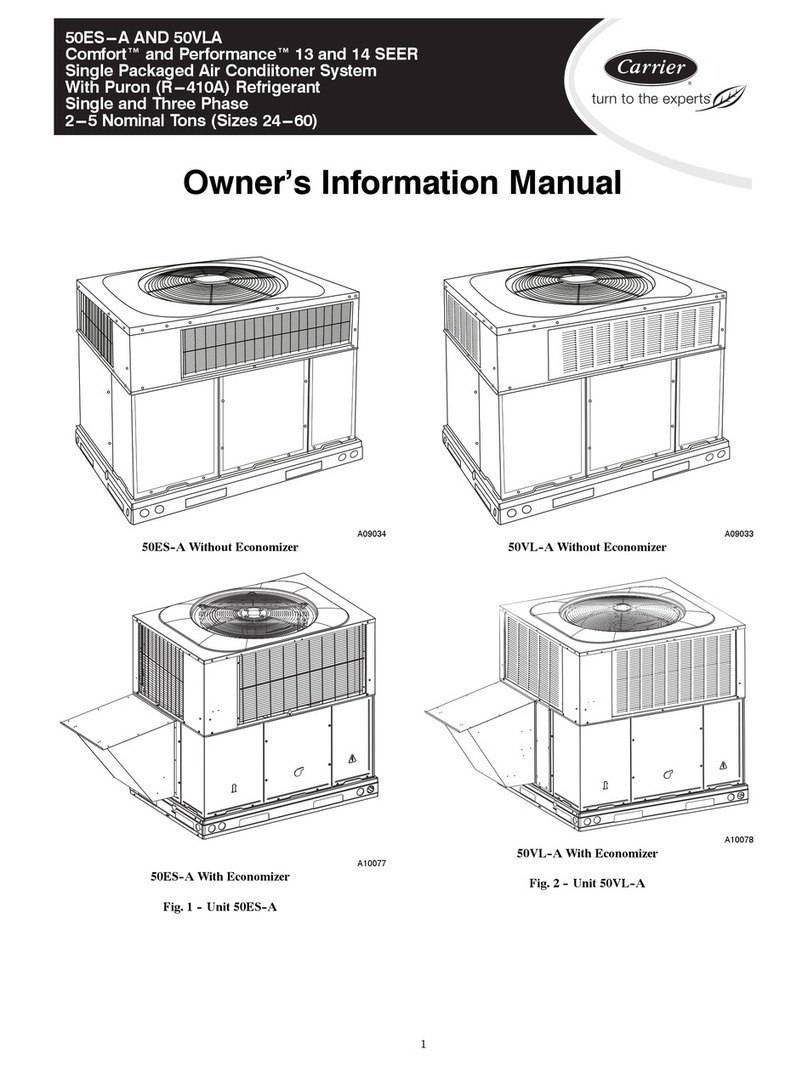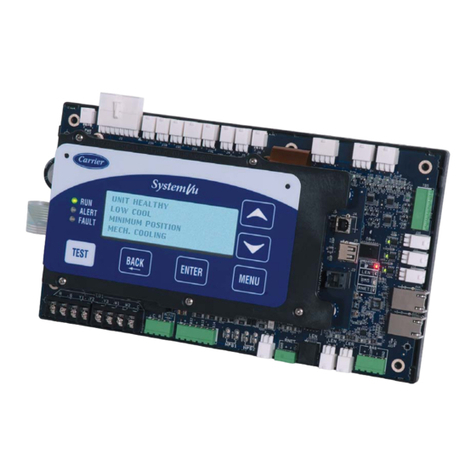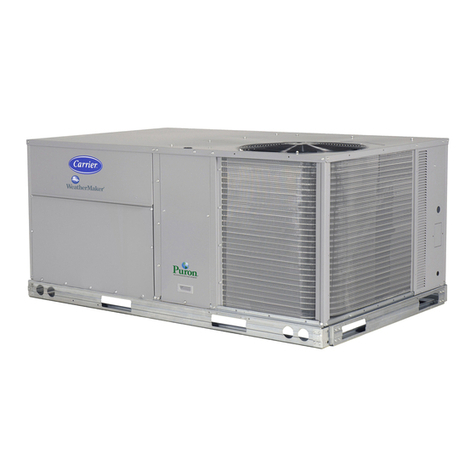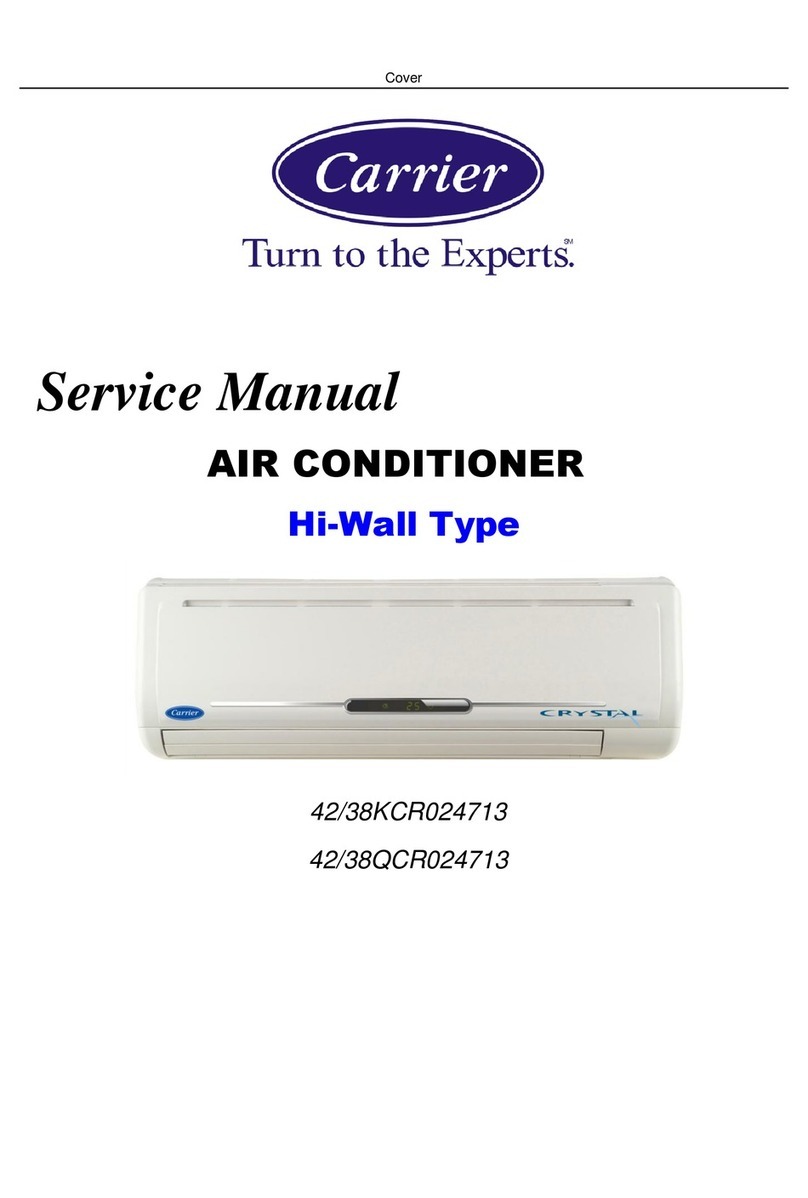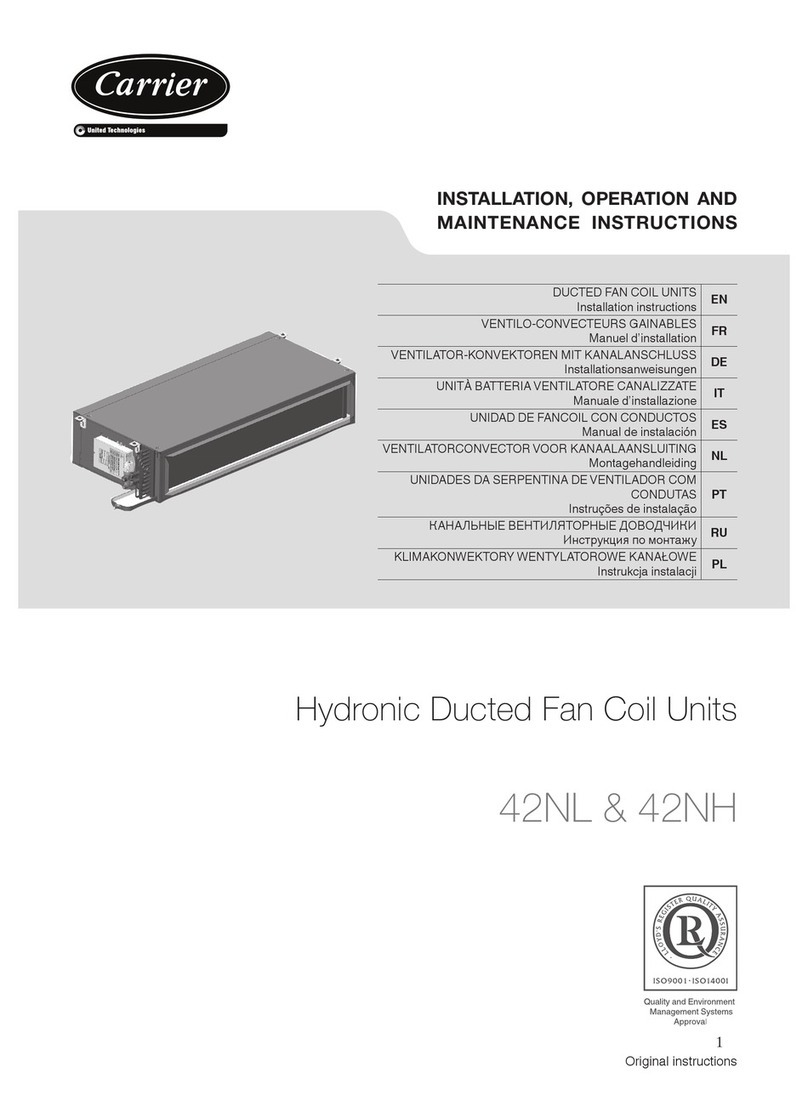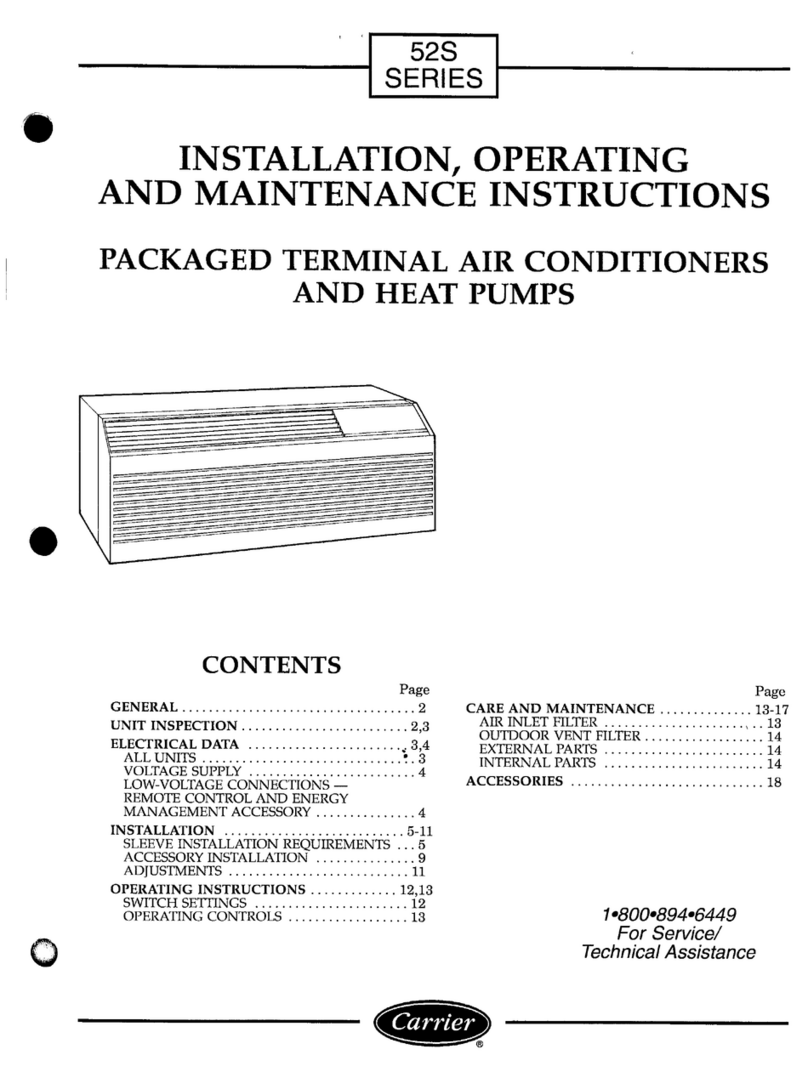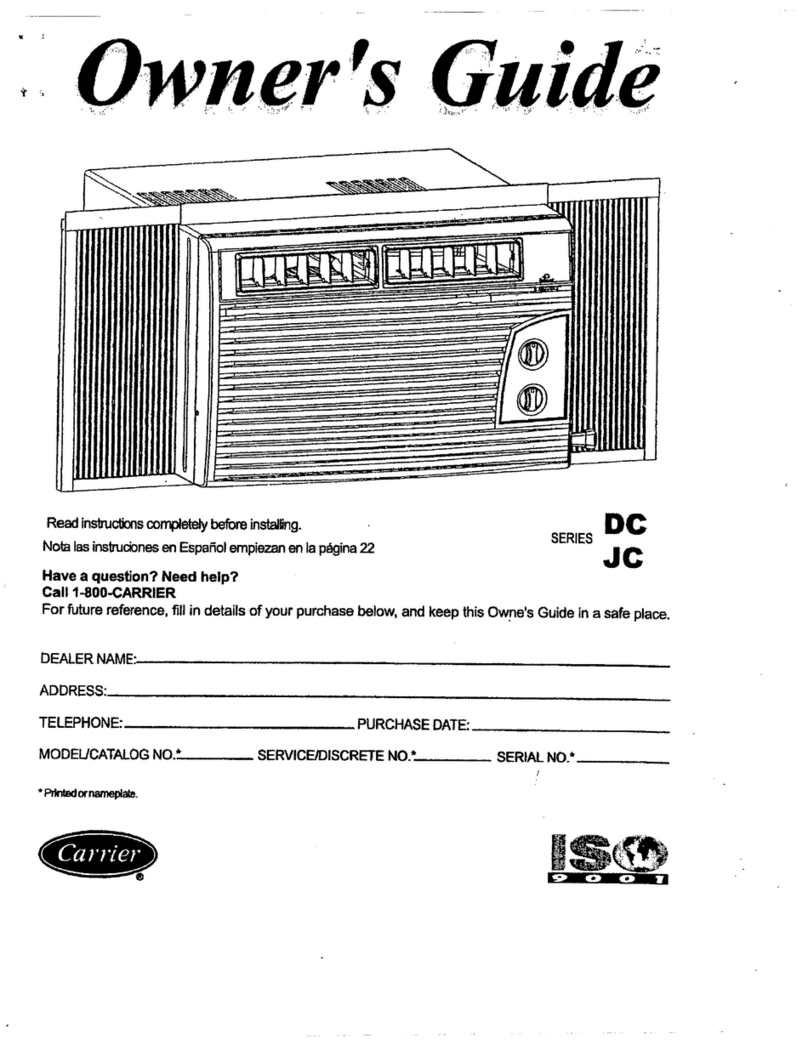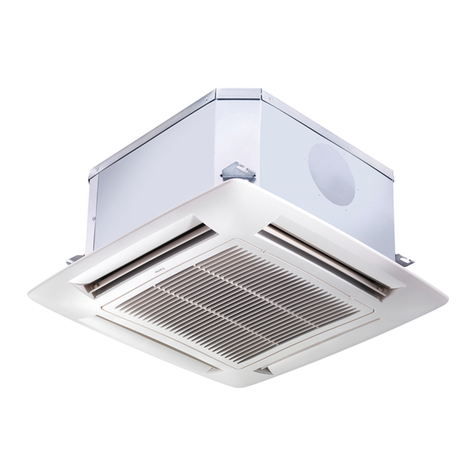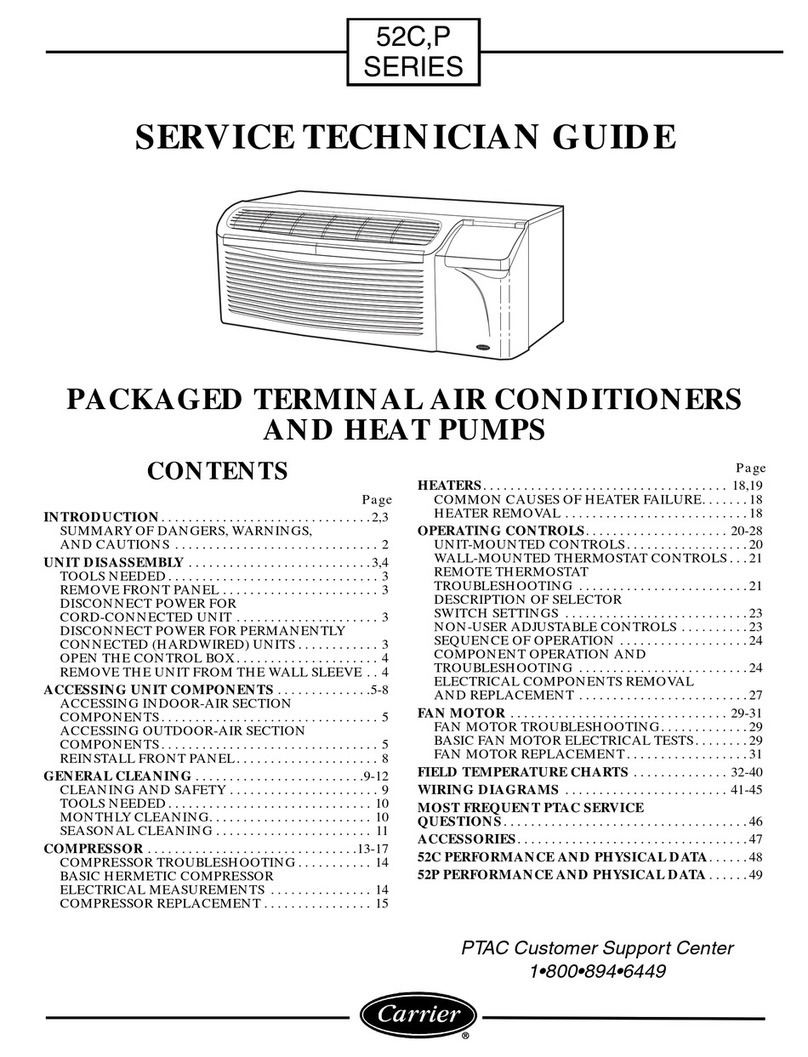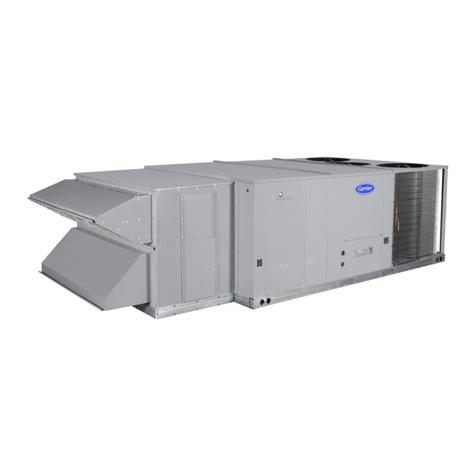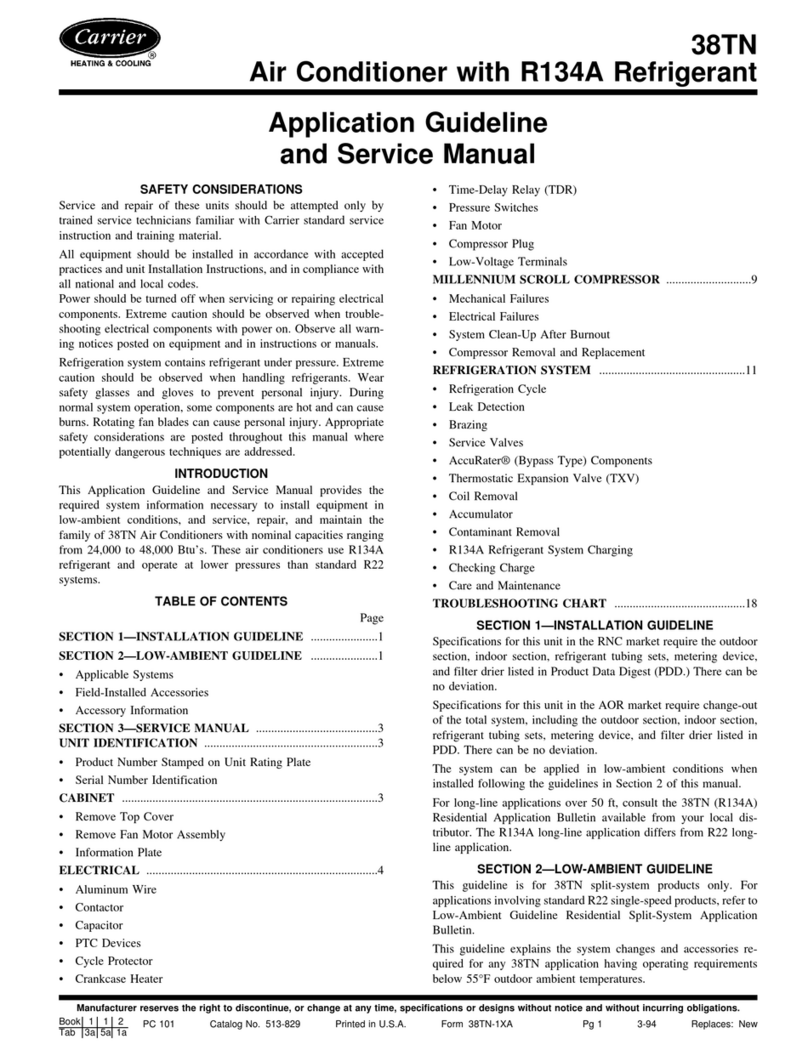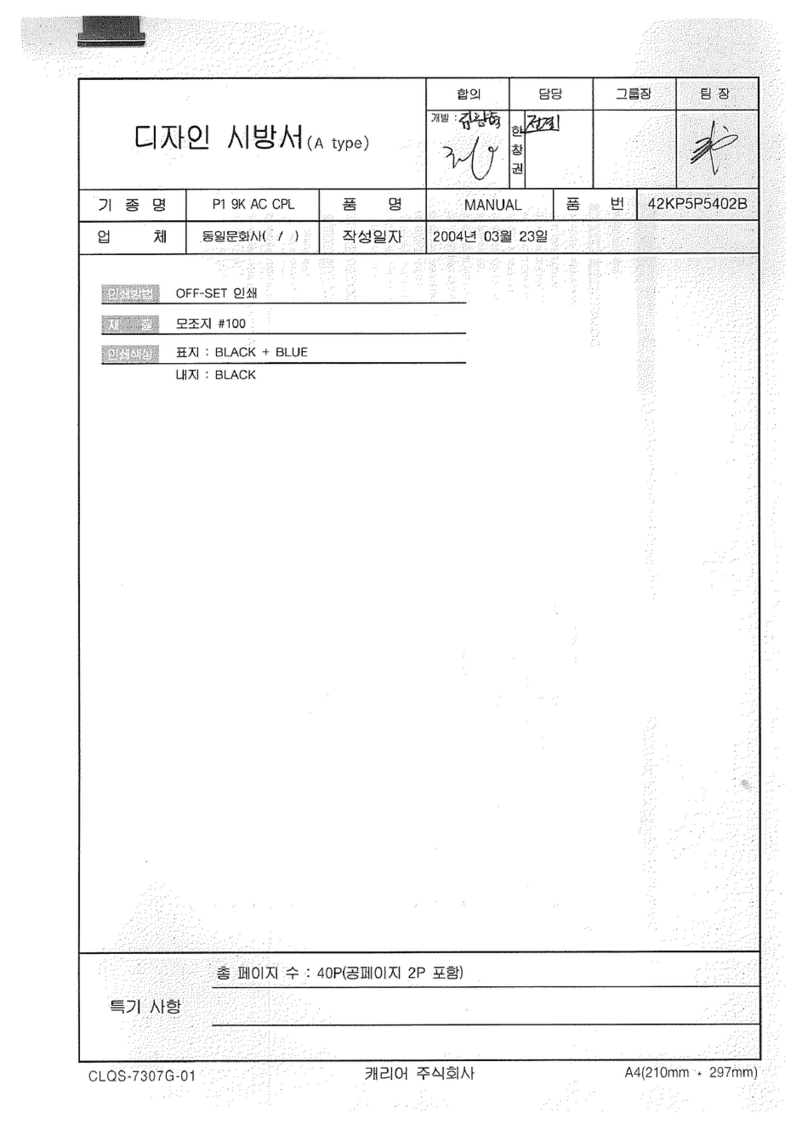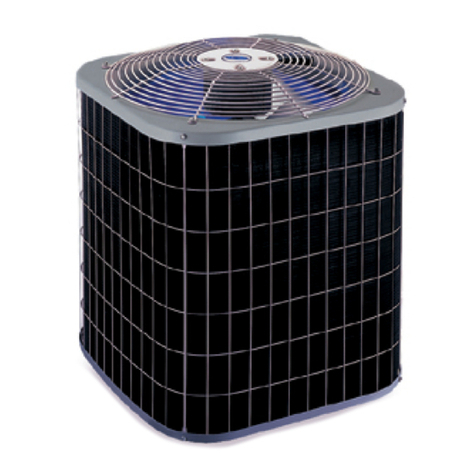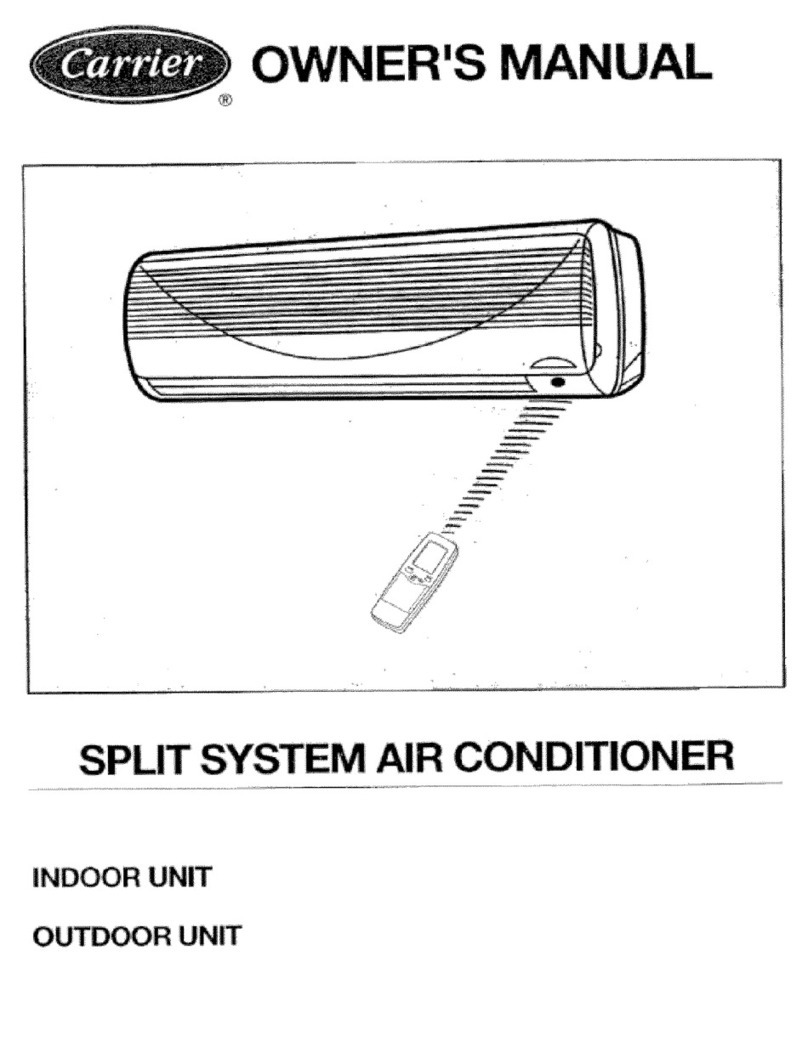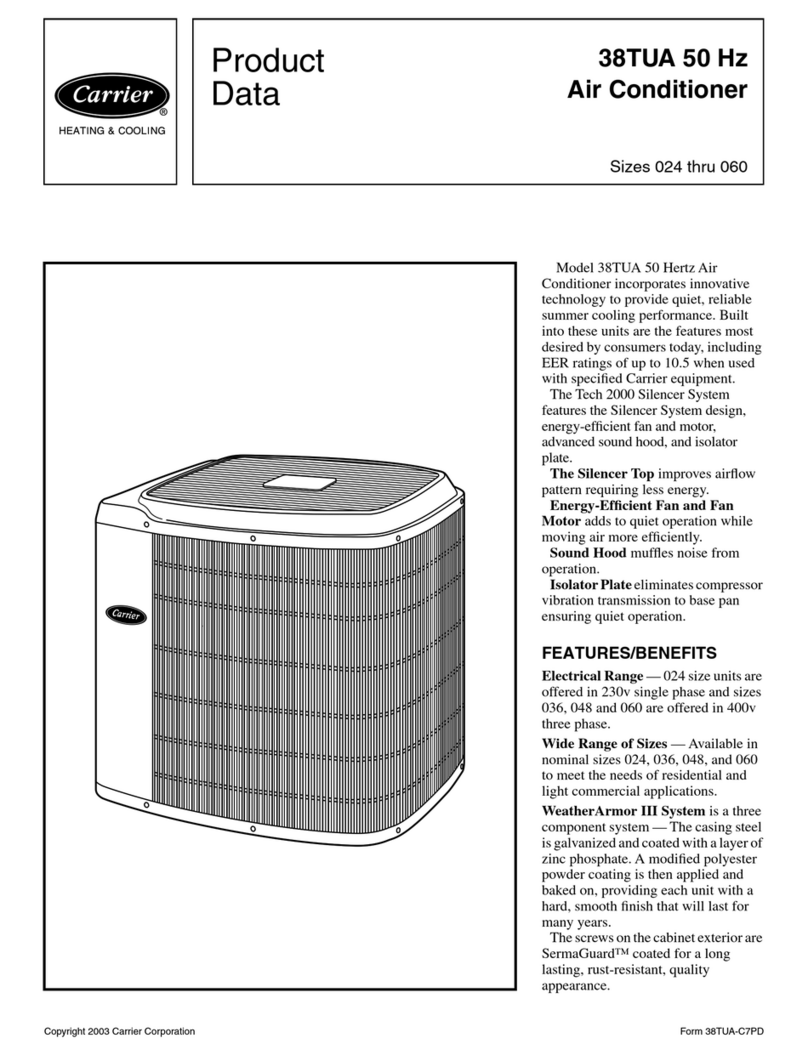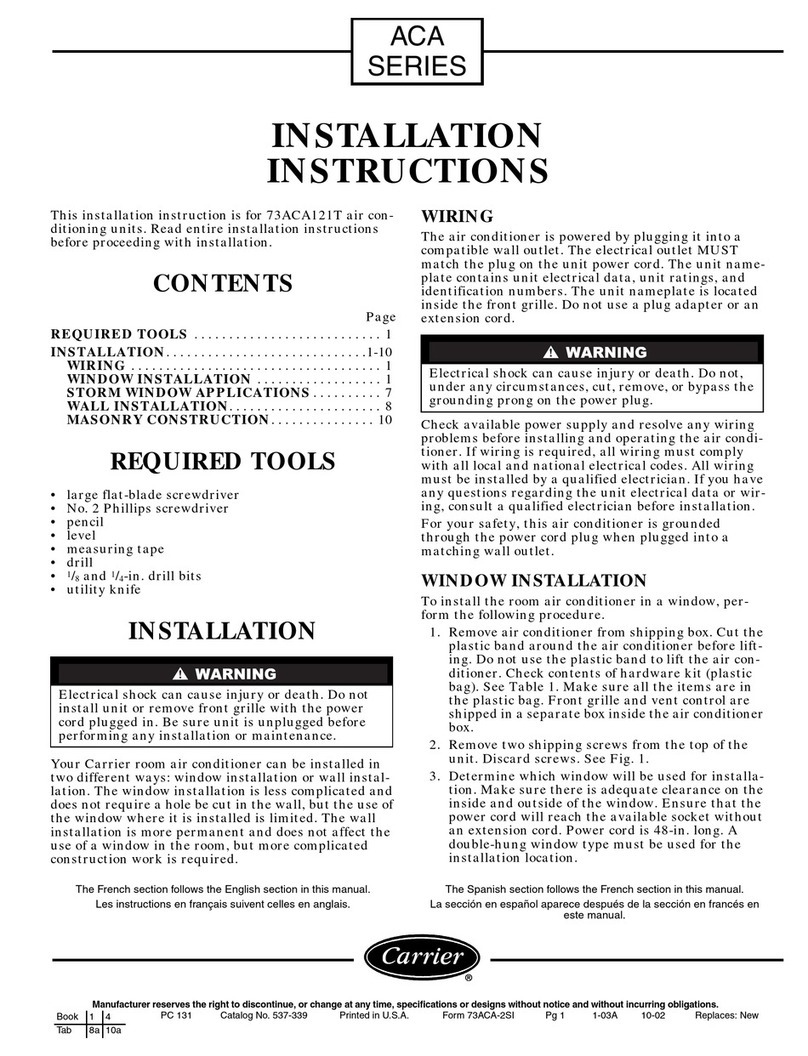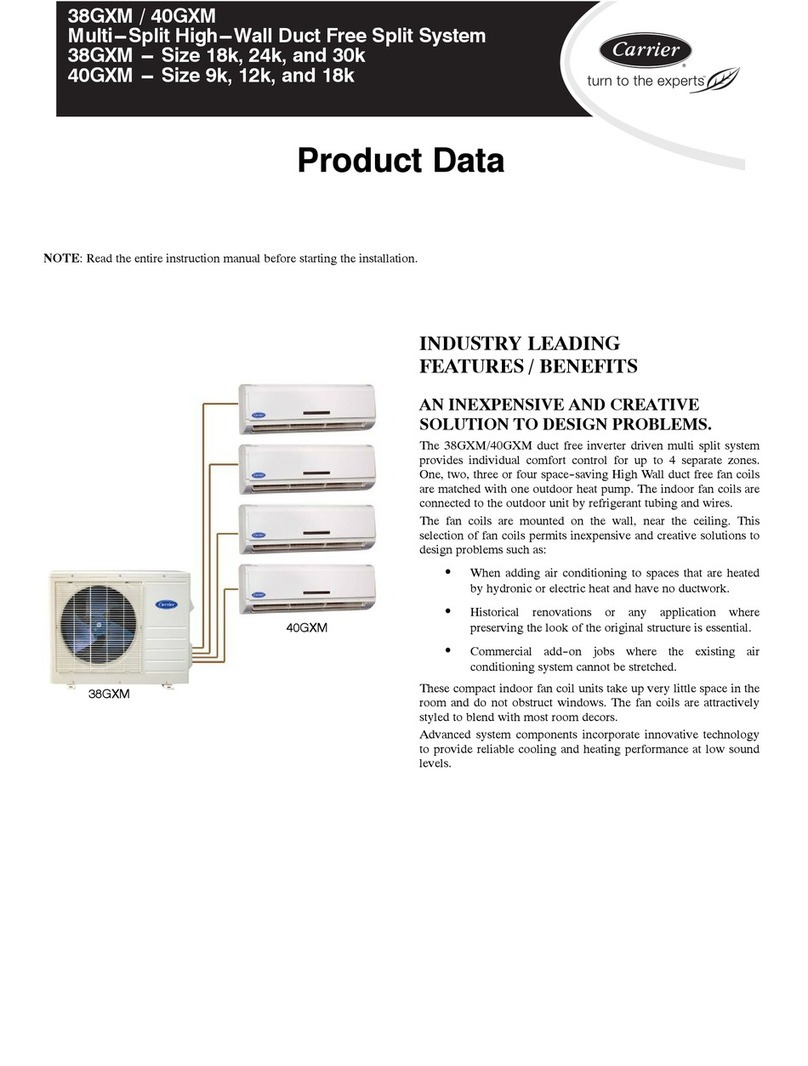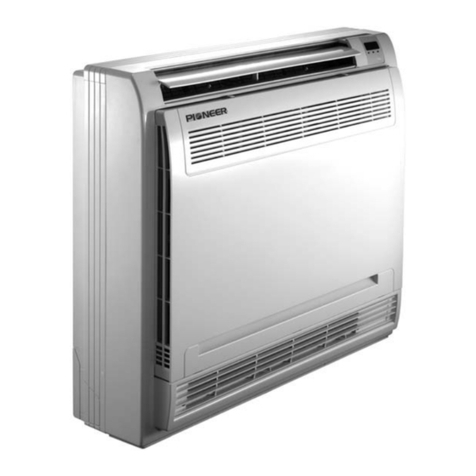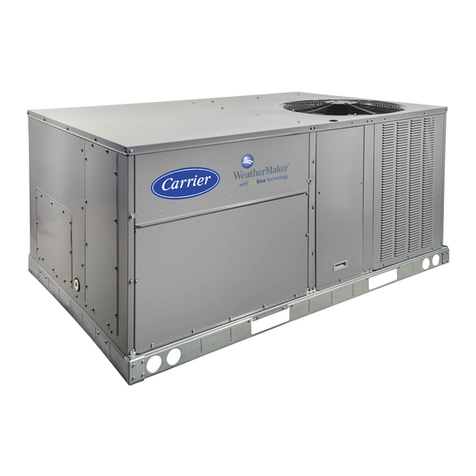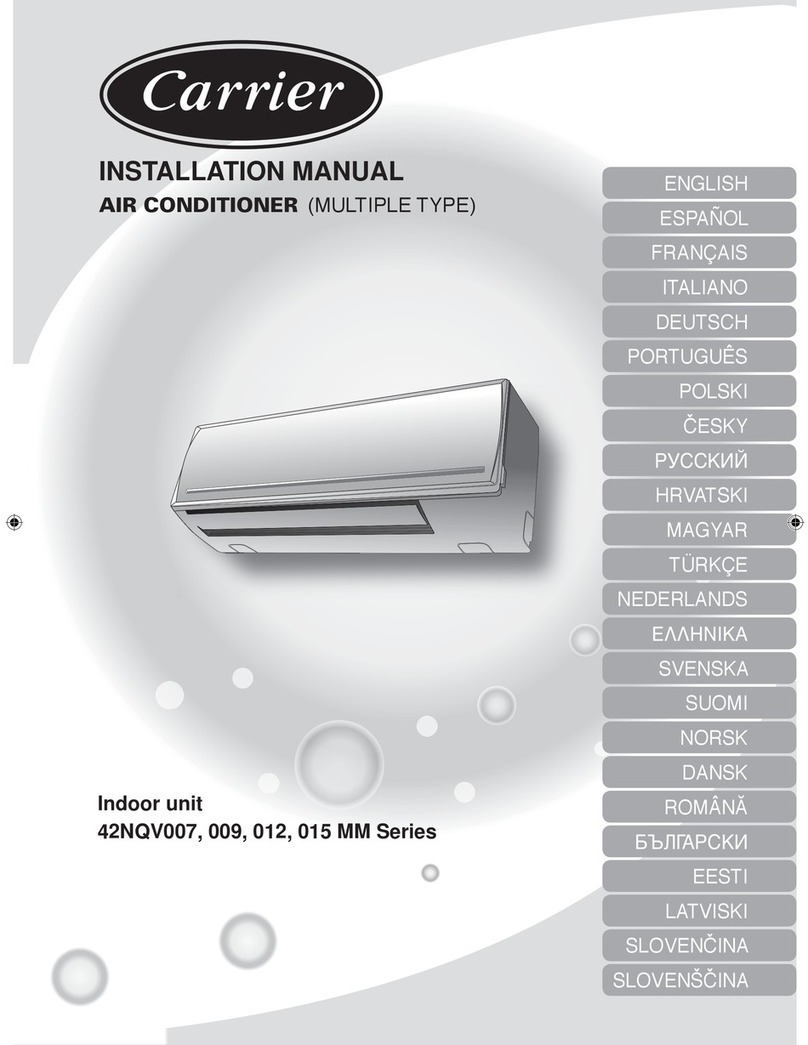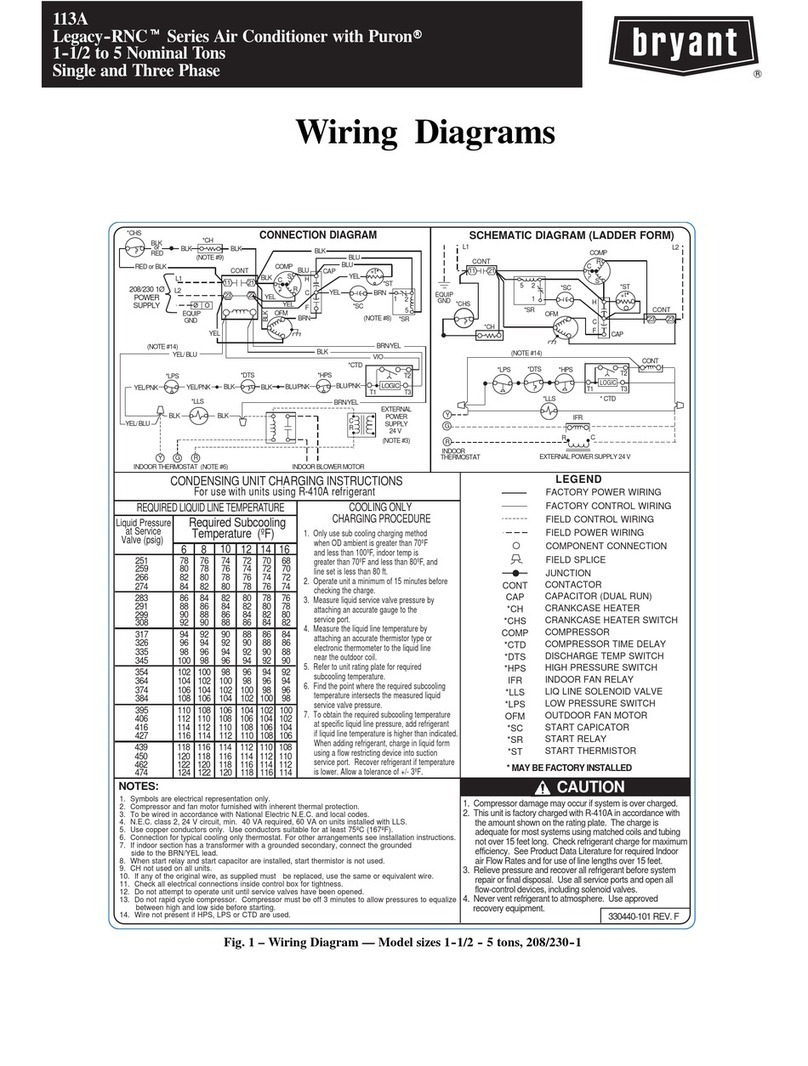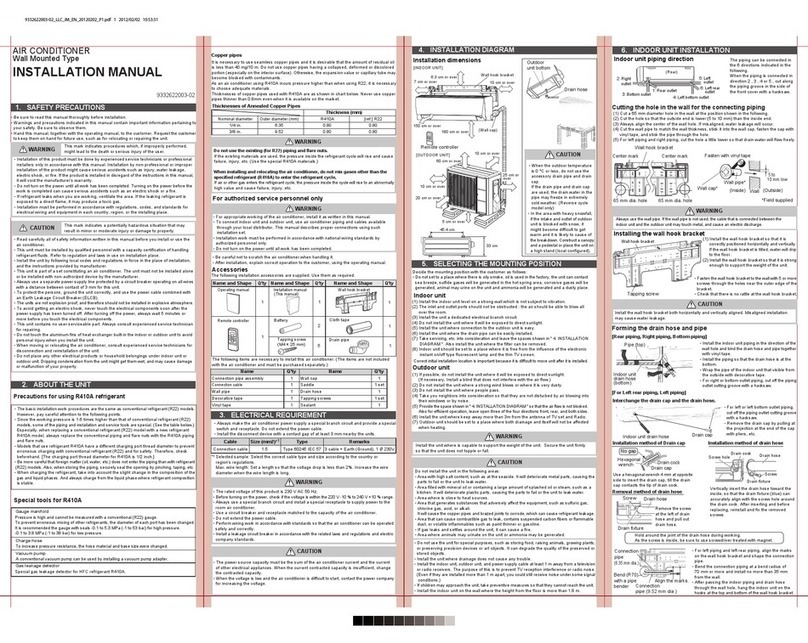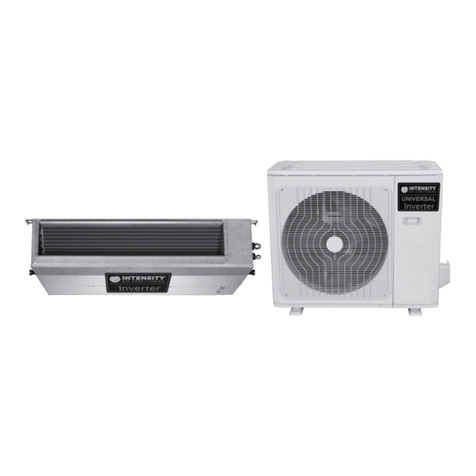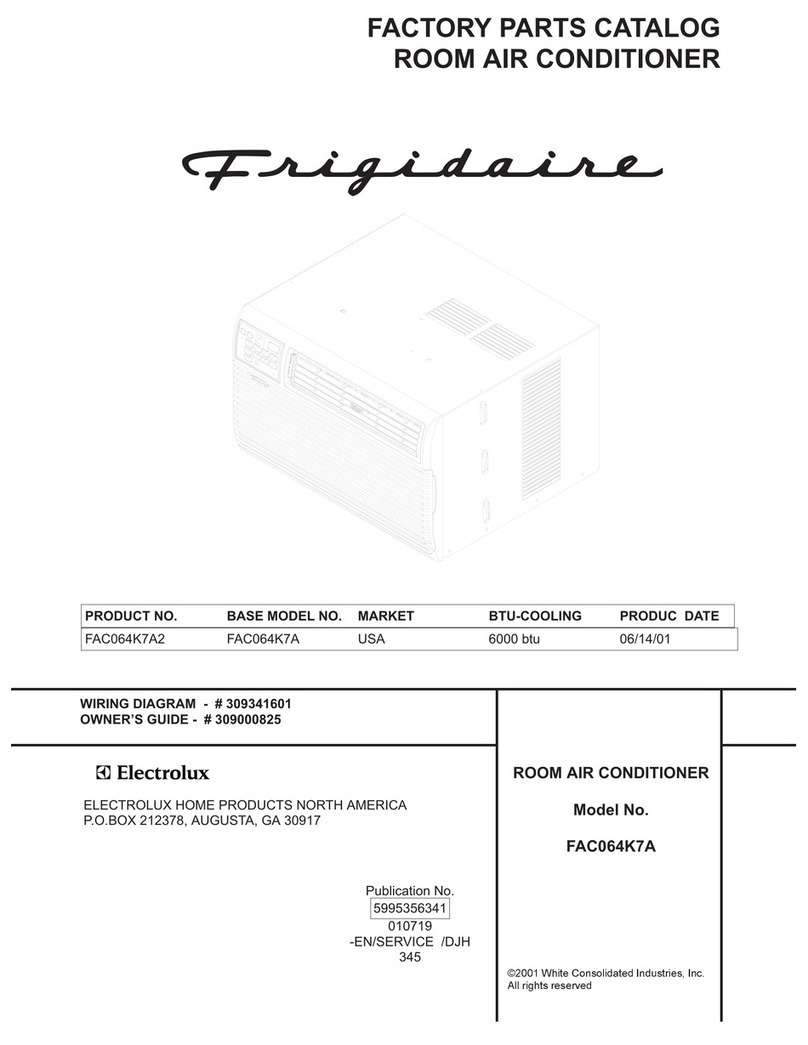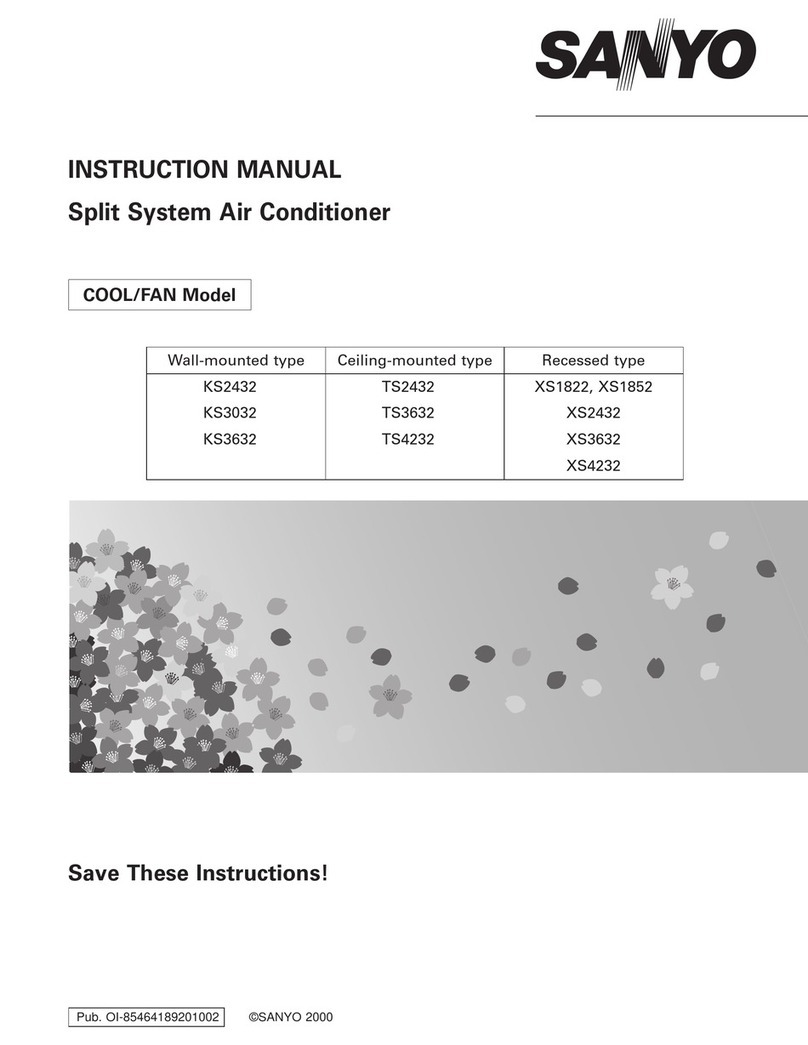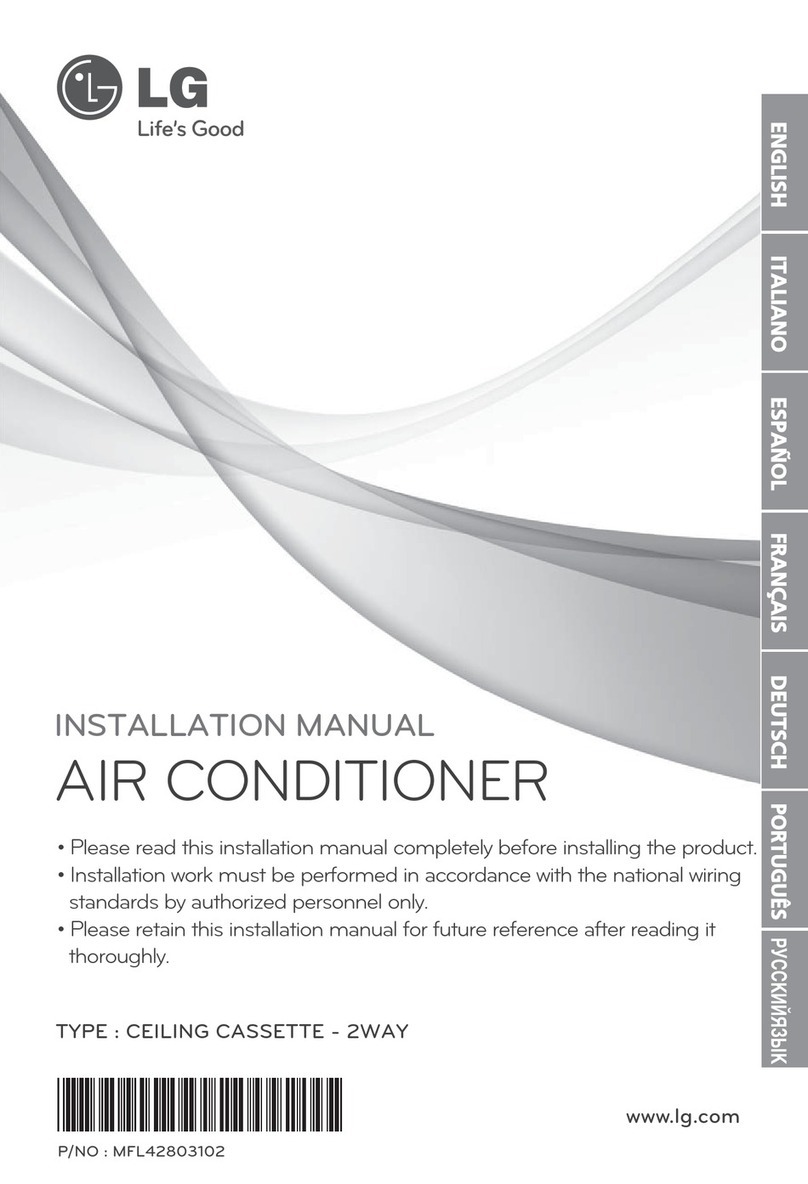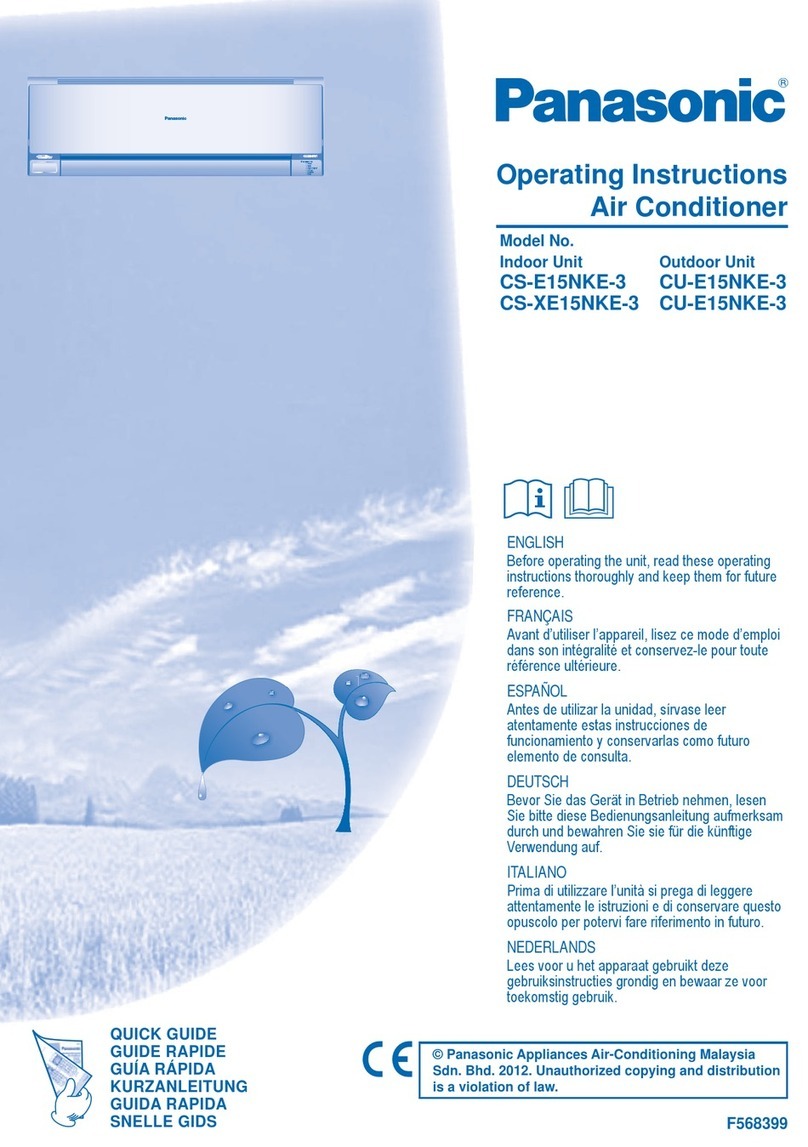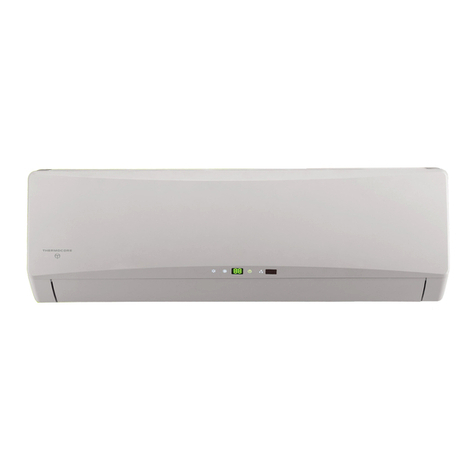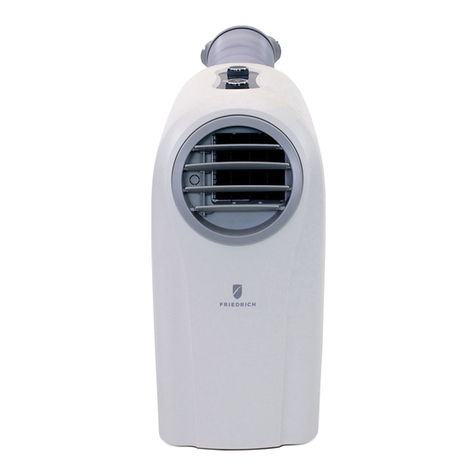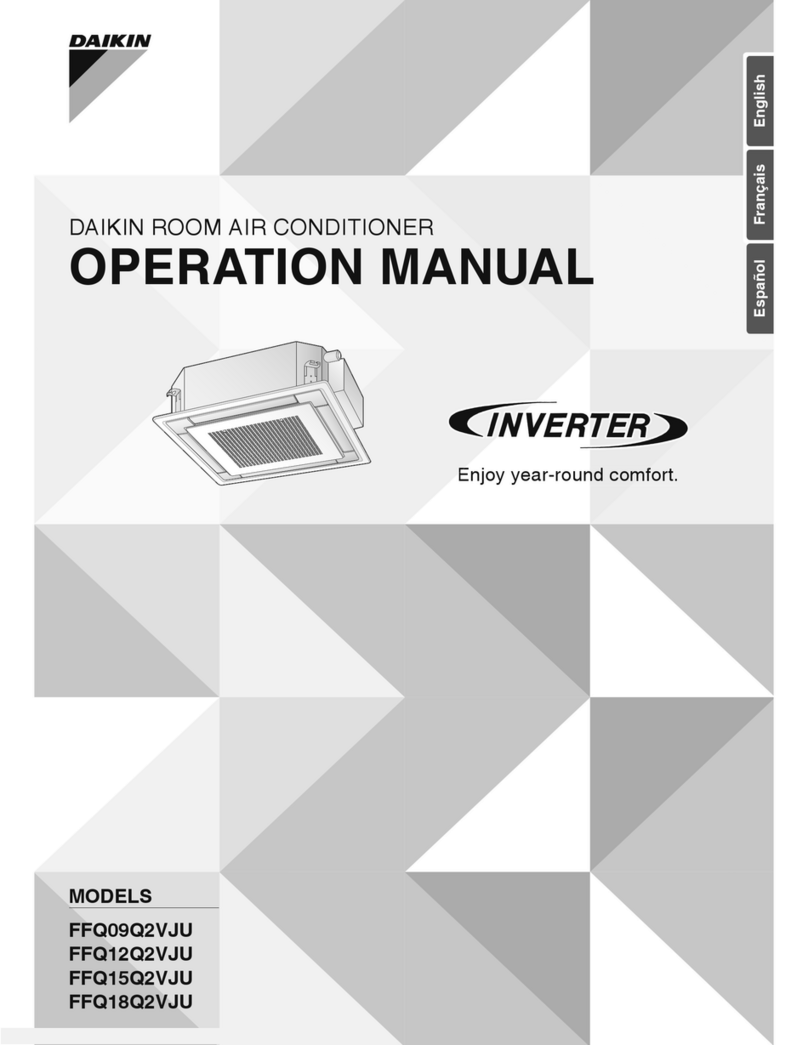
T--336
1--1
05/09
SECTION 1
DESCRIPTION
1.1 INTRODUCTION
This manual contains Operating Instructions, Service
Instructions and Electrical Data for the Model DC12175
and DC12174 Air Conditioning equipment furnished by
Carrier Transport Air Conditioning as shown in
Table 1--1. Additional support manuals are referenced
in Table 1--2.
The Model DC12175 system consists of a CM--5
condensing unit, an EM--17 evaporator section and a
rear engine compartment mounted 05G compressor.
TheModelDC12174systemconsists ofaKR--4rooftop
condensing unit, an EM--17 evaporator section and a
rear engine compartment mounted 05G compressor.
NOTE
An optional 05K compressor can be used in
place of the 05G in lighter duty applications.
To complete the systems, the air conditioning
equipment interfaces with electrical cabling, refrigerant
piping, duct work and other components furnished by
the bus manufacturer.
Information on the compressor(s) is provided in
separately bound manuals. Refer to Table 1--2.
The drivers control is equipped with a single
HIGH--OFF--LOW switch and A/C Stop Light. The
switch isplaced in the desired fan speed postion to start
temperature control. Operation of the system is
controlled automatically by an electronic thermostat
which maintains the vehicles interior temperature at the
desired set point. Some systems may be configured to
override the high speed selection to low speed once
interior temperature approaches set point. The A/C
Stop Light will be liuminated if the system is shut down
on a safety.
Description of the system components are provided in
the following sub paragraphs and illustrated in
Figure1--1.
1.1.1 Evaporator Section (EM--17)
Theevaporator system includestheevaporatorcoil,fan
and motor assemblies, a thermostatic expansion valve
and condensate drain line connections. Also included
with theevaporator assembly areUPS1, 2& 3, CFS 1&
2, a Liquid Line solenoid (LLS) and Condenser fan
speed resistor.
The thermostatic expansion valve meters the flow of
refrigerant entering the evaporator coil. The evaporator
coil provides heat transfer surface for transfering heat
from air circulating over the coil to refrigerant circulating
inside the tubes; thus providing cooling. The optional
heating coils provide heat transfer surface for
transfering heat from engine coolant water circulating
inside the tubes to air circulating over the outside
surface of the tubes; thus providing heating. The fans
circulate the air over the coils. The air filters remove dirt
particles from the air before it passes over the coils.
1.1.2 Condensing Section
The condensing section includes the condenser coil (s)
fan and motor assemblies, filter--drier, receiver (with
sightglassandmoistureindicator),dischargelinecheck
valve, discharge line connection, service valves, fusible
plug and an ambient temperature sensor.
The discharge check valve is a spring loaded, normally
closed valve that opens with the flow of refrigerant from
the compressor. When the compressor clutch is
disengaged, the discharge check valve will close,
preventing the flow of high pressure liquid from the
condenser back into the compressor.
The condenser coil provides heat transfer surface for
condensing refrigerant gas at a high temperature and
pressure into a liquid at high temperature and pressure.
The condenser fans circulate ambient air across the
outside of the condenser tubes at a temperature lower
than the refrigerant circulating inside the tubes; this
results in condensation of the refrigerant into a liquid.
The receiver collects and stores the liquid refrigerant.
The receiver is fitted with liquid level sight glass to
enable determination of refrigerant liquid level and
moisture content. The receiver is also fitted with a
fusible plug which protectsthe systemfrom unsafe high
pressure conditions. The filter--drier removes moisture
and debris from the liquid refrigerant before it enters the
thermostatic expansion valve. The service valves
enable isolation of the filter--drier for service. The
ambient temperature sensor opens below 50°Fto
prevent A/C operation
1.1.3 Compressor Assembly
The compressor assembly includes the refrigerant
compressor, clutch assembly, suction and discharge
service valves, high pressure switch, low pressure
switch,suctionanddischargeservicing (charging)ports
and electrical solenoid unloaders.
Thecompressorraisesthepressureandtemperatureof
the refrigerant and forces it into the condenser. The
clutch assembly provides a means to disengage the
compressor from the bus engine. The suction and
discharge service valves enable servicing of the
compressor. Suction and discharge servicing
(charging) ports mounted on the service valves enable
connection of charging hoses for servicing of the
compressor, as well as other parts of the refrigerant
circuit. The high pressure switch contacts open on a
pressurerisetoshut downthe system whenabnormally
high refrigerant pressures occur. The electric unloaders
provide a means of controlling compressor capacity,
which enables control of temperature inside the bus.

